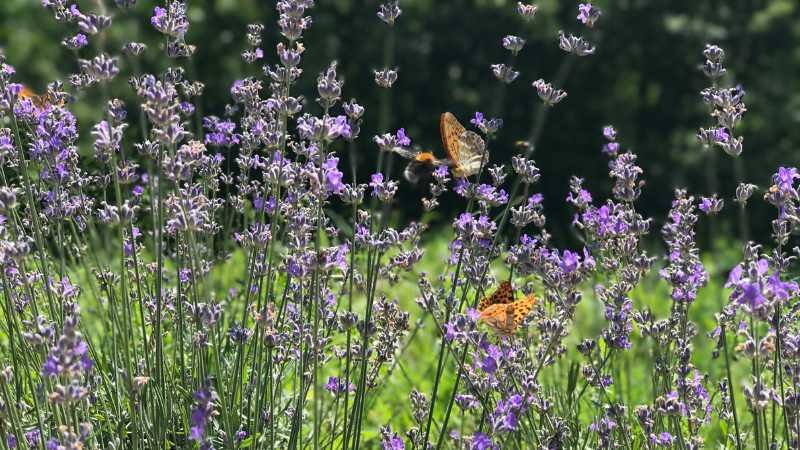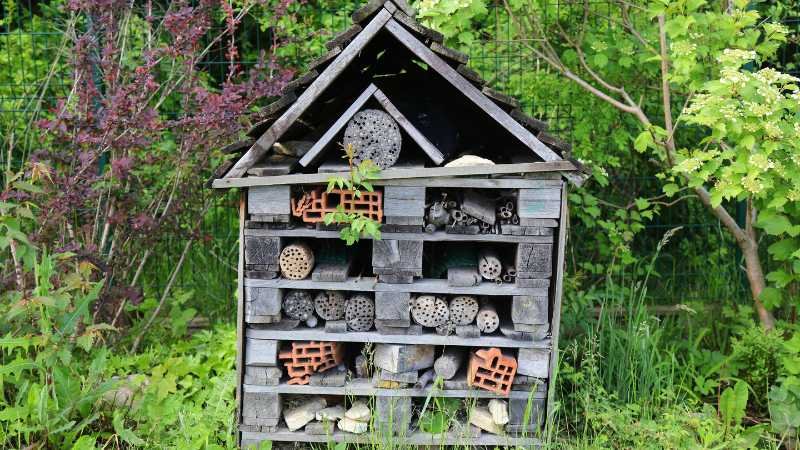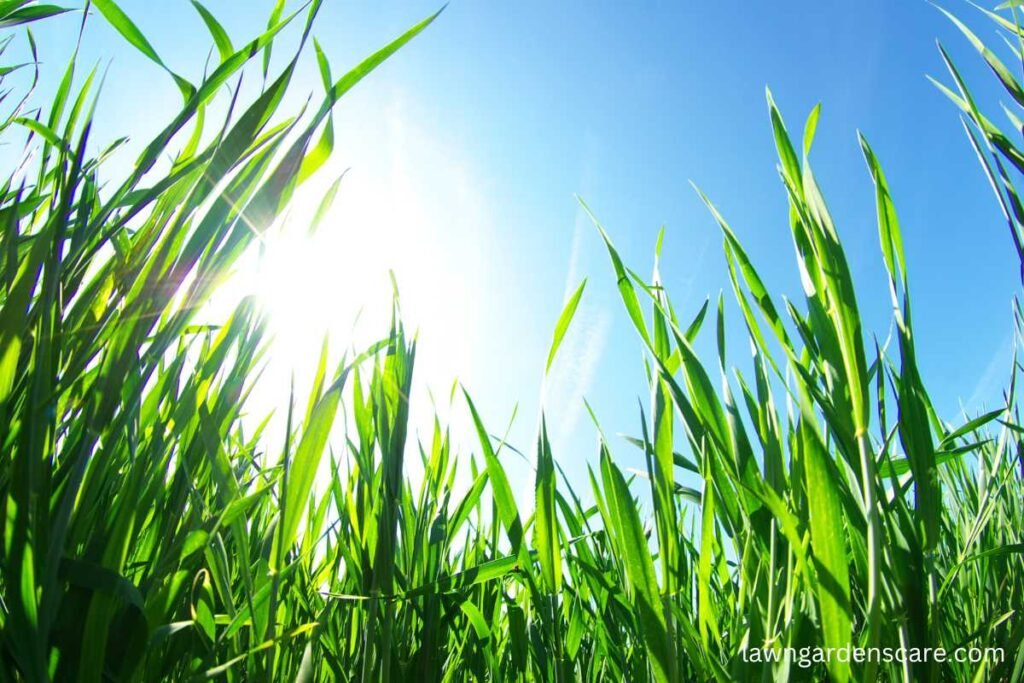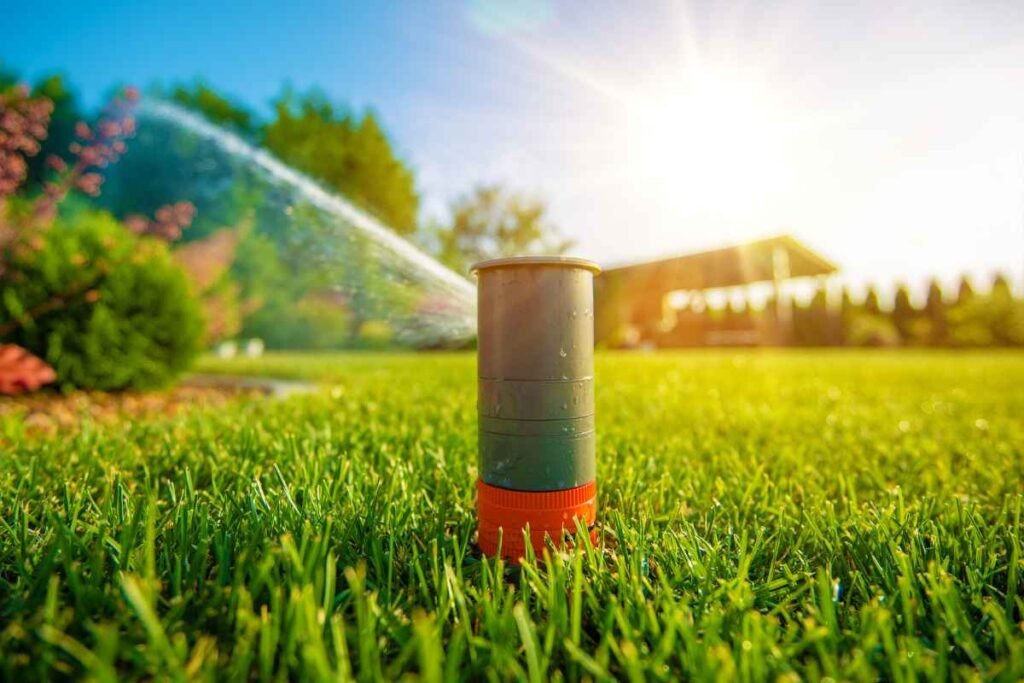Creating a pollinator garden is a rewarding way to support biodiversity and contribute to the health of your local ecosystem. By carefully selecting native plants, providing essential resources, you can attract and sustain a variety of pollinators. This guide will walk you through the necessary steps on how to make a pollinator garden and ensuring that these vital creatures have the food, water, and shelter they need to flourish.
What Is a Pollinator Garden?
A pollinator garden is a garden specifically designed to attract and support pollinators such as bees, butterflies, hummingbirds, and other beneficial insects. These gardens provide essential resources like nectar, pollen, water, and shelter, creating an environment where pollinators can thrive.
Key Features of a Pollinator Garden
- Diverse Plant Selection:
- Native Plants: Native plants are adapted to the local environment and are preferred by local pollinators. They provide the most suitable nectar and pollen.
- Variety of Plants: Including a variety of plants ensures that there are food sources available throughout the growing season. This diversity supports different pollinator species with varying needs.
- Continuous Blooming:
- Seasonal Blooms: A well-planned pollinator garden has plants that bloom at different times of the year, from early spring to late fall. This provides a continuous supply of nectar and pollen.
- Plant Clusters: Grouping the same species of plants together helps pollinators locate them more easily.
- Nectar and Pollen Sources:
- Flower Variety: Different pollinators are attracted to different types of flowers based on their shape, color, and nectar production. For instance, bees prefer blue and purple flowers, while hummingbirds are attracted to red tubular flowers.
- Habitat and Shelter:
- Nest Sites: Providing nesting sites for bees, such as bare ground for ground-nesting bees or bee hotels for solitary bees, is essential.
- Cover: Dense plantings, leaf litter, and brush piles offer shelter and protection for pollinators from predators and harsh weather.
- Water Sources:
- Water Availability: Pollinators need water for drinking and cooling. Shallow dishes filled with water and pebbles can serve as effective water sources.
- Clean and Fresh: Regularly cleaning and refilling water sources ensures they remain safe for pollinators to use.
- Avoiding Pesticides:
- Pesticide-Free: Pollinators are highly sensitive to pesticides. A pollinator garden should avoid or minimize the use of chemicals and opt for natural pest control methods instead.
Benefits of a Pollinator Garden
- Biodiversity Support: By providing habitat and resources, pollinator gardens help support a wide variety of pollinator species, which are crucial for maintaining ecological balance.
- Improved Pollination: Pollinators are essential for the pollination of many crops and wild plants. A healthy population of pollinators can improve the productivity of gardens and surrounding agricultural areas.
- Educational Opportunities: Pollinator gardens can serve as living classrooms, offering opportunities to learn about plant-pollinator interactions, biodiversity, and ecological stewardship.
- Aesthetic Appeal: A well-designed pollinator garden is not only functional but also beautiful. The diverse array of flowering plants can create a vibrant and visually pleasing landscape.
7 Types of Pollinators and Their Importance
1. Bees
Types:
- Honeybees (Apis mellifera): Managed for honey production and crop pollination.
- Bumblebees (Bombus spp.): Effective pollinators of tomatoes, peppers, and other crops due to their ability to perform buzz pollination.
- Solitary Bees: Includes mason bees, leafcutter bees, and carpenter bees. These bees are excellent pollinators of fruits, vegetables, and flowers.
Importance:
- Bees are the most efficient pollinators due to their body structure, which allows them to collect and transfer large amounts of pollen.
- They are vital for the pollination of many fruits, vegetables, and nuts, contributing significantly to agricultural productivity and biodiversity.
2. Butterflies
Types:
- Monarch Butterflies (Danaus plexippus): Known for their long migrations and reliance on milkweed plants.
- Swallowtail Butterflies (Papilionidae family): Large and colorful, often seen fluttering around flowers.
- Painted Ladies (Vanessa cardui): Cosmopolitan species found in many parts of the world.
Importance:
- Butterflies are important pollinators for wildflowers and garden plants.
- Their pollination activities support the reproduction of many plant species, helping to maintain ecological balance and biodiversity.
- Butterflies serve as indicators of a healthy environment and ecosystem.
3. Moths
Types:
- Hawk Moths (Sphingidae family): Known for their ability to hover like hummingbirds, pollinating flowers such as tobacco and orchids.
- Yucca Moths (Tegeticula spp.): Essential for the pollination of yucca plants.
Importance:
- Moths, particularly those that are active at night, pollinate plants that bloom in the evening or at night.
- They are crucial for the reproduction of night-blooming plants and help support nocturnal ecosystems.
4. Birds
Types:
- Hummingbirds (Trochilidae family): Found mainly in the Americas, they have a unique ability to hover and feed on nectar from tubular flowers.
Importance:
- Hummingbirds are key pollinators for many native plants, particularly those with tubular flowers that other pollinators cannot access.
- Their role in pollination helps maintain the diversity of flowering plants in ecosystems.
5. Bats
Types:
- Fruit Bats (Pteropodidae family): Also known as flying foxes, found in tropical and subtropical regions.
- Lesser Long-Nosed Bats (Leptonycteris yerbabuenae): Pollinate cacti and agave in desert regions.
Importance:
- Bats are vital pollinators in tropical and desert ecosystems, particularly for plants that bloom at night.
- They play a crucial role in the pollination of fruits like bananas, mangoes, and guavas, as well as agave plants used in tequila production.
6. Flies
Types:
- Hoverflies (Syrphidae family): Resemble bees and are often seen hovering around flowers.
- Bee Flies (Bombyliidae family): Mimic bees and visit a wide range of flowers.
Importance:
- Flies, particularly hoverflies, are important pollinators for many plants, especially in cooler climates where bees are less active.
- They contribute to the pollination of crops such as carrots, onions, and brassicas, as well as many wildflowers.
7. Beetles
Types:
- Soldier Beetles (Cantharidae family): Common in gardens and known to visit flowers.
- Scarabs (Scarabaeidae family): Pollinators of certain tropical plants.
Importance:
- Beetles are among the oldest pollinators, having been around since the time of the dinosaurs.
- They are crucial for the pollination of many ancient plant species, including magnolias and water lilies.
How To Make A Pollinator Garden

1. Planning Your Garden
Assess Your Space:
- Size and Location: Determine the size of your garden and choose a location that receives ample sunlight (at least 6 hours a day).
- Soil Type: Test your soil to understand its composition and pH level. Most pollinator plants thrive in well-draining soil.
Design the Layout:
- Garden Zones: Divide the garden into zones for different plant types (e.g., flowers, shrubs, trees).
- Pathways: Design pathways to navigate through the garden without disturbing the plants.
Select Plants:
- Native Plants: Choose native plants that are well-suited to your local climate and soil conditions.
- Variety of Blooms: Include plants that bloom at different times of the year to provide continuous food sources.
- Plant Clusters: Group plants in clusters to make it easier for pollinators to find them.
2. Preparing the Soil
Clear the Area:
- Remove Existing Vegetation: Clear the area of grass, weeds, and unwanted plants. This can be done manually or with the help of a sod cutter.
Improve Soil Quality:
- Add Organic Matter: Enrich the soil with compost or well-rotted manure to improve its fertility and structure.
- pH Adjustment: If necessary, adjust the soil pH to suit the plants you intend to grow. Most pollinator plants prefer a slightly acidic to neutral pH (6.0-7.0).
3. Planting
Timing:
- Spring or Fall: Plant in early spring or fall when the weather is cooler, and the soil is moist. These seasons provide optimal conditions for root establishment.
Planting Technique:
- Digging Holes: Dig holes that are twice the width of the root ball and just as deep.
- Planting Depth: Place the plants in the holes so that the top of the root ball is level with the soil surface.
- Spacing: Follow the recommended spacing for each plant species to ensure they have enough room to grow and spread.
Watering:
- Initial Watering: Water the plants thoroughly after planting to help them settle in and reduce transplant shock.
- Ongoing Watering: Keep the soil consistently moist but not waterlogged until the plants are established.
4. Mulching and Maintenance
Mulching:
- Apply Mulch: Spread a 2-3 inch layer of mulch around the plants to retain moisture, suppress weeds, and regulate soil temperature.
- Avoid Stem Contact: Keep mulch away from the stems of plants to prevent rot.
Maintenance:
- Watering: Water the garden regularly, especially during dry periods. Deep, infrequent watering encourages deep root growth.
- Weeding: Keep the garden weed-free to reduce competition for resources.
- Deadheading: Remove spent flowers to encourage new blooms and extend the flowering season.
- Pruning: Prune plants as needed to maintain their shape and promote healthy growth.
5. Providing Additional Resources
Water Sources:
- Shallow Dishes: Place shallow dishes of water with pebbles or stones for insects to land on.
- Birdbaths: Install birdbaths and keep them clean and filled with fresh water.
Shelter and Nesting Sites:
- Bee Hotels: Install bee hotels or create nesting sites for solitary bees by drilling holes in untreated wood.
- Leaf Litter and Logs: Leave leaf litter, dead wood, and fallen branches in the garden to provide shelter for butterflies and other insects.
- Hedges and Shrubs: Plant dense hedges and shrubs to offer nesting sites and protection from the elements.
Necessary Tools and Ingredients to Build a Pollinator Garden
Tools
- Garden Tools:
- Shovel/Spade: For digging holes and planting.
- Trowel: For planting smaller plants and bulbs.
- Rake: To level the soil and spread mulch.
- Hoe: Useful for weeding and soil preparation.
- Pruners/Shears: For trimming and maintaining plants.
- Gloves: To protect your hands while gardening.
- Watering Can/Hose: For watering plants, especially during dry periods.
- Soil Preparation Tools:
- Garden Fork: For turning and aerating the soil.
- Soil Testing Kit: To check soil pH and nutrient levels.
- Compost Bin: For creating and storing compost.
- Mulching and Weeding Tools:
- Mulch Fork: For spreading mulch around plants.
- Weeder: For removing weeds from the garden.
- Additional Tools:
- Wheelbarrow: For transporting soil, compost, mulch, and plants.
- Measuring Tape: To measure plant spacing and garden layout.
- Garden Markers/Labels: To label plants and plan the garden layout.
Ingredients
- Plants:
- Native Plants: Plants that are native to your region and are preferred by local pollinators.
- Flowering Plants: A variety of perennials and annuals with different bloom times to provide continuous food sources.
- Trees and Shrubs: Flowering trees and shrubs that offer additional resources and habitat.
- Soil and Soil Amendments:
- Compost: Organic matter to improve soil fertility and structure.
- Mulch: To retain moisture, suppress weeds, and regulate soil temperature.
- Organic Fertilizers: To provide necessary nutrients for plant growth.
- Topsoil: If necessary, to improve the quality of existing soil.
- Water Sources:
- Shallow Water Dishes: For providing water to pollinators. Place stones or pebbles in the dishes to give insects a safe place to land.
- Birdbaths: Another option for providing water, but ensure they are shallow and clean.
- Shelter and Nesting Sites:
- Bee Hotels: Structures with drilled holes for solitary bees to nest in.
- Logs and Stumps: Left in the garden to provide natural habitats.
- Leaf Litter: Allow some leaf litter to remain in the garden to provide shelter for ground-dwelling pollinators.
- Dense Plantings: Shrubs and dense plant areas to offer protection and nesting sites.
- Pesticide Alternatives:
- Natural Pest Control: Beneficial insects like ladybugs and predatory beetles.
- Organic Pesticides: If needed, use neem oil or insecticidal soap, applied carefully to avoid harming pollinators.
Important Steps To Make A Pollinator Garden

1. Choose Native Plants
Native plants are naturally adapted to your local climate and soil conditions, and they have co-evolved with native pollinators. This makes them the best choice for supporting local pollinator species. You can find native plants by entering the zip code on Native Plant Finder.
Steps:
- Research Native Species: Look up plants that are native to your region. Local botanical gardens, native plant societies, and university extension services are good resources.
- Diverse Selection: Include a mix of perennials, annuals, shrubs, and trees to provide a variety of food sources and habitats.
- Layering Plants: Design your garden with plants of various heights to create layers, mimicking natural ecosystems. This offers more foraging options and shelter.
Example Plant List
Bees:
- Coneflowers (Echinacea)
- Lavender (Lavandula)
- Sunflowers (Helianthus)
- Asters (Symphyotrichum)
- Black-eyed Susans (Rudbeckia)
Butterflies:
- Milkweed (Asclepias)
- Butterfly Bush (Buddleja)
- Lantana (Lantana camara)
- Zinnias (Zinnia elegans)
- Joe-Pye Weed (Eutrochium)
Hummingbirds:
- Trumpet Vine (Campsis radicans)
- Salvia (Salvia spp.)
- Bee Balm (Monarda)
- Fuchsia (Fuchsia spp.)
2. Plant a Variety of Flowers
Different pollinators are attracted to different flowers. Providing a variety ensures you support a broad range of pollinator species.
Steps:
- Bloom Times: Plan your garden so there are always flowers in bloom. Early-blooming plants like crocuses and late-blooming plants like asters ensure continuous food supply.
- Colors and Shapes: Bees are attracted to blue, purple, and yellow flowers. Butterflies prefer red, yellow, orange, pink, and purple flowers. Hummingbirds are drawn to red, tubular flowers.
- Group Plantings: Plant the same species in clusters rather than scattering them. This makes it easier for pollinators to find the flowers.
3. Avoid Pesticides
Pesticides can kill pollinators directly or harm them indirectly by reducing their food supply.
Steps:
- Natural Alternatives: Introduce beneficial insects like ladybugs and predatory beetles that eat pests. Planting pest-repelling plants like marigolds can also help.
- Organic Products: If pest control is necessary, choose organic options like neem oil or insecticidal soaps, and apply them during times when pollinators are not active (early morning or late evening).
- Integrated Pest Management (IPM): Use a combination of biological, physical, and chemical methods to manage pests with minimal harm to pollinators.
4. Provide Water Sources
Pollinators need water for drinking and cooling, especially during hot weather.
Steps:
- Shallow Water Sources: Use shallow dishes, birdbaths, or create small puddles. Add stones or pebbles for insects to land on safely.
- Maintenance: Clean and refill water sources regularly to prevent the spread of diseases and mosquito breeding.
5. Create Shelter
Pollinators need safe places to live, reproduce, and hide from predators.
Steps:
- Habitat Structures: Leave some bare ground for ground-nesting bees. Install bee hotels for solitary bees by drilling holes in blocks of untreated wood.
- Natural Debris: Leave leaf litter, dead wood, and fallen branches to provide shelter for butterflies, beetles, and other insects.
- Hedges and Shrubs: Plant dense hedges and shrubs to offer nesting sites and protection from the elements.
6. Reduce Lawn Area
Lawns typically offer little food or habitat for pollinators.
Steps:
- Replace Grass: Convert parts of your lawn into wildflower meadows or pollinator gardens. These areas can be low-maintenance and highly beneficial for pollinators.
- Ground Covers: Plant ground covers like clover, which can attract bees and other beneficial insects.
7. Incorporate Trees and Shrubs
Trees and shrubs can provide significant food sources and habitats for many pollinators.
Steps:
- Fruit Trees and Berries: Plant fruit trees (like apple or cherry) and berry bushes (like raspberries or blueberries) that provide nectar and pollen.
- Diverse Plantings: Include a variety of flowering trees and shrubs that bloom at different times to provide continuous food sources.
8. Educate and Involve the Community
Spreading awareness and getting others involved can enhance the impact of your efforts.
Steps:
- Share Knowledge: Educate neighbors and community members about the importance of pollinator-friendly practices. Use social media, local workshops, or garden tours.
- Community Projects: Organize or participate in community garden projects. Collaborate with local schools, organizations, or gardening clubs to create larger pollinator habitats.
Organizations That Support Pollinators
There are several organizations in the USA dedicated to supporting pollinators through conservation efforts, research, education, and advocacy. Here are some notable organizations:
1. The Xerces Society for Invertebrate Conservation
Website: Xerces Society
Mission:
- Protect the natural world through the conservation of invertebrates and their habitats.
Programs and Initiatives:
- Pollinator Conservation Program: Provides resources and guidance on creating pollinator-friendly habitats.
- Bee City USA: A program that encourages cities to support bees and other pollinators.
- Pesticide Reduction: Works to reduce the use of harmful pesticides that affect pollinators.
2. Pollinator Partnership
Website: Pollinator Partnership
Mission:
- Promote the health of pollinators, critical to food and ecosystems, through conservation, education, and research.
Programs and Initiatives:
- National Pollinator Week: An annual event to raise awareness about pollinator health.
- Ecoregional Planting Guides: Provides tailored guides for planting pollinator-friendly gardens across different regions.
- Bee Friendly Farming: Certification program for farms that support pollinator health.
3. Monarch Watch
Website: Monarch Watch
Mission:
- Focus on the conservation of the Monarch butterfly, providing educational resources and promoting habitat restoration.
Programs and Initiatives:
- Monarch Waystation Program: Encourages individuals to create habitats for Monarch butterflies.
- Tagging Program: Involves citizen scientists in tracking Monarch migration.
- Milkweed Market: Supplies milkweed plants, essential for Monarch reproduction.
4. National Wildlife Federation (NWF)
Website: National Wildlife Federation
Mission:
- Inspire Americans to protect wildlife for our children’s future.
Programs and Initiatives:
- Garden for Wildlife: Encourages creating wildlife-friendly gardens that support pollinators.
- Butterfly Heroes: A campaign to help butterflies and other pollinators by providing habitats.
5. North American Pollinator Protection Campaign (NAPPC)
Website: NAPPC
Mission:
- Promote and protect pollinators by supporting a network of diverse partnerships.
Programs and Initiatives:
- Collaborative efforts with government agencies, non-profits, and industry to support pollinator health.
- Development of resources and best practices for pollinator conservation.
6. The Honeybee Conservancy
Website: The Honeybee Conservancy
Mission:
- Raise awareness about the importance of bees and engage in educational and conservation efforts to protect them.
Programs and Initiatives:
- Sponsor-a-Hive: Provides hives to schools, gardens, and communities to support local bee populations.
- Bee Sanctuaries: Establishes sanctuaries to protect and nurture bee colonies.
7. The Native Plant Society of the United States
Website: Native Plant Society
Mission:
- Promote the use of native plants to support pollinators and other wildlife.
Programs and Initiatives:
- Education on the benefits of native plants.
- Resources for gardeners and landscapers on planting native species.
8. The American Beekeeping Federation (ABF)
Website: American Beekeeping Federation
Mission:
- Advocate for the interests of American beekeepers and promote the importance of bees in pollination.
Programs and Initiatives:
- Education and training for beekeepers.
- Advocacy for policies that support bee health and sustainability.
9. The Nature Conservancy
Website: The Nature Conservancy
Mission:
- Conserve the lands and waters on which all life depends.
Programs and Initiatives:
- Habitat restoration projects that support pollinators.
- Partnerships with agricultural communities to promote pollinator-friendly practices.
10. U.S. Fish and Wildlife Service (USFWS)
Website: USFWS
Mission:
- Work with others to conserve, protect, and enhance fish, wildlife, plants, and their habitats.
Programs and Initiatives:
- Pollinator Conservation Initiative: Focuses on habitat restoration and research to support pollinator species.
- Partnerships with local communities and organizations to promote pollinator health.
Summary
In summary, creating a pollinator garden involves selecting native plants, ensuring continuous blooms, providing water sources, and creating safe habitats while avoiding pesticides. With thoughtful planning and maintenance, your garden will attract and support a variety of pollinators. Also, try the green practices for maintaining lawn and garden to enhance biodiversity and ecological health in your area.

